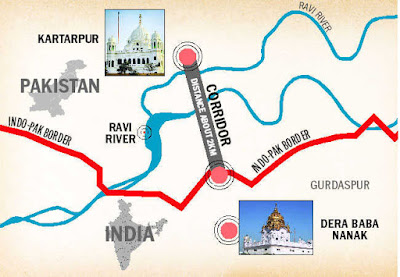Death of an elephant : Whom should we blame??
 |
| A pregnant elephant stranded in river |
On 3rd of June,2020, Media reported a grueling story of death of a pregnant elephant in Kerala's Pallakad district. The incident went viral after a forest section officer in Kerala posted the whole episode describing how the elephant struggled in a river and died.The incident actually took place on May 27 when the elephant collapsed standing in the river after it suffered an injury on its lower jaw. The elephant was first identified with the injury on May 23 and on the next day it reached river velliyar for water. It stood for a whole day in the water to relieve itself from the pain and collapsed in the river. The wildlife department planned to take the elephant out of the river but by then it had collapsed. Later the forest personnel gave the elephant an honorable farewell by burying it in the forest. The exact cause of the injury is yet to be ascertained as the investigation is going on,but the forest officials suspect that it might have got injured after consuming a pine apple stuffed with crackers.The female wild elephant's preliminary post-mortem examination was conducted at the Mannarkkad Forest Division. It revealed that the animal died as a result of drowning, followed by inhalation of water leading to lung failure which has been identified as the immediate cause of death of the elephant. In Kerala there is a practice called "Panni Padakkam" where the locals trap wild boars by stuffing fruits with firecrackers. So some say,the pregnant elephant might be an unintentional target. Whatever might be the case,trapping animals in such an inhuman manner is totally unacceptable.The Kerala forest department has appointed a SIT to investigate the cause of the death and bring the perpetrators to book. Various sections were registered under wild life protection act to punish the perpetrators. The incident really shook the nation and many people poured their condolences to the elephant on social media. For the first time,the death of an animal caught the attention of the whole nation,but we have to recognize the fact that it is not a stand-alone incident. This story may wane after some days and people would slowly slip into their mundane activities, but it would be a greater mistake if we fail to identify the main reason behind this incident. We as a society can blame a handful of people for these kind of inhuman practices,but if we go deeper in to the problem,we have to blame the whole humanity. The bitter truth behind all these mishaps is "Human-Wildlife conflict".
As we humans are progressing by leaps and bounds in the name of development,we are encroaching the habitats of other living beings mainly the habitats of animals and birds.i.e., forests. The main reason behind this habitat loss is deforestation,in the year 2009,India ranked 10th worldwide in the amount of forest loss. Even though the government is making efforts to compensate the loss by taking up various afforestation measures,the habitat loss is something irreversible. In order to protect these animals and resources from exploitation,we have protected areas constituted under Wild life (protection) act 1972,the emphasis of this initiative is to protect the biodiversity ignoring the space in these protected habitats, for example a territorial animal like a male tiger needs an area of 60-100 sq km. But the area allocated to an entire tiger reserve, like the Bor Tiger Reserve in Maharashtra, is 138.12 sq km. This is barely enough for one or two tigers.The elephants need to travel at least 10-20 km a day. If a herd is restricted to an area of about 100 sq km, they are bound to move out in search of food and water. Elephants are used to travelling long distances, most of which fall outside the protected areas.wildlife experts estimate that 29% of the tigers in India are outside the protected areas. The wild which are living in these inadequately spaced protected areas also loses prey as the time passes and these animals are forced to venture out of their natural habitats. Loss of natural habitats for some of these animals also lead to uncontrolled growth in their population,for example,monkeys which live in forests have to search for nearly 14 hrs to get the food,but their entry in to urban areas provide easy access to food which leads to unbalanced growth in population of monkeys,trans locating them again into forests leads to conflict with humans living along the border area of forests.Due to various infrastructure development activities,sometimes, people are being rehabilitated and pushed towards border areas of forests,these people who never encountered wild in their life faces a new challenge and these people try to eliminate those encountered animals by using unconventional methods,unlike tribal communities who are well-versed in coexisting with the wild.
In view of the recent gruel incident where an elephant got killed,we will focus on human-elephant conflict. Elephants are long-lived animals, and their survival depends upon regular migration over large distances to search for food, water, and social and reproductive partners (Sukumar, 2003; Whyte, 2012). As a generalist mega-herbivore, elephants consume a maximum of 150 kg of forage and 190 L of water daily (Vancuylenberg, 1977; Sukumar, 2003). Meeting these basic needs requires a large foraging area to provide a variety of grasses, shrubs, and tree leaves, roots, and fruits. A typical family herd of Asian elephants (5–20 individuals) has a home range size of 100–1,000 km2 (Fernando and Lande, 2000; Williams et al., 2001; Alfred et al., 2012); This regular migration of elephants lead to conflict with humans.These conflicts not only cause loss of animal life but also human life,In the three years between 2015-2018, human-elephant conflict caused 1,713 human and 373 elephant deaths by unnatural causes, including electrocution and poaching. There are also some instances where many elephants were killed in train accidents. In some of the regions,railway tracks passes through elephant habitats and when the herds are on move,they cross these tracks and get hit by speeding trains. So to avoid any such heart wrenching incidents,the focus should be on reducing this Human-elephant conflict and the wildlife conservation machinery should undertake various measures to increase the area of these protected habitats and involve the local community in preserving these sensitive regions. Traditional methods followed by tribal communities should be adopted to coexist with the wild life,for example,The Elephants and Bees Project in Africa is an innovative study using an in-depth understanding of elephant behavior to reduce damage from crop-raiding elephants using their instinctive avoidance of African honey bees. The project explores the use of novel Beehive Fences as a natural elephant deterrent creating a social and economic boost to poverty-stricken rural communities through the sustainable harvesting of “Elephant-Friendly Honey”. So these kind of less harmful methods should be adopted to avoid human-elephant conflict and save the animals from getting killed.
The whole discourse on the incident should also take into consideration on how these habitat loss can be reclaimed and how these human-wildlife conflicts can be reduced rather than focusing only on how the perpetrators can be punished or targeting a particular community,it is prudent to leave it to the forest officials who are carrying out the investigations. Also, We have these kind of conflicts taking place in all the states of India and lots of wildlife has been lost due to these face-offs. It is the time to identify the larger issue and become a part to address it rather than spewing hatred.
Sources :
Google images.
Facts on Elephant behavioral migration is copied from the below source





Comments